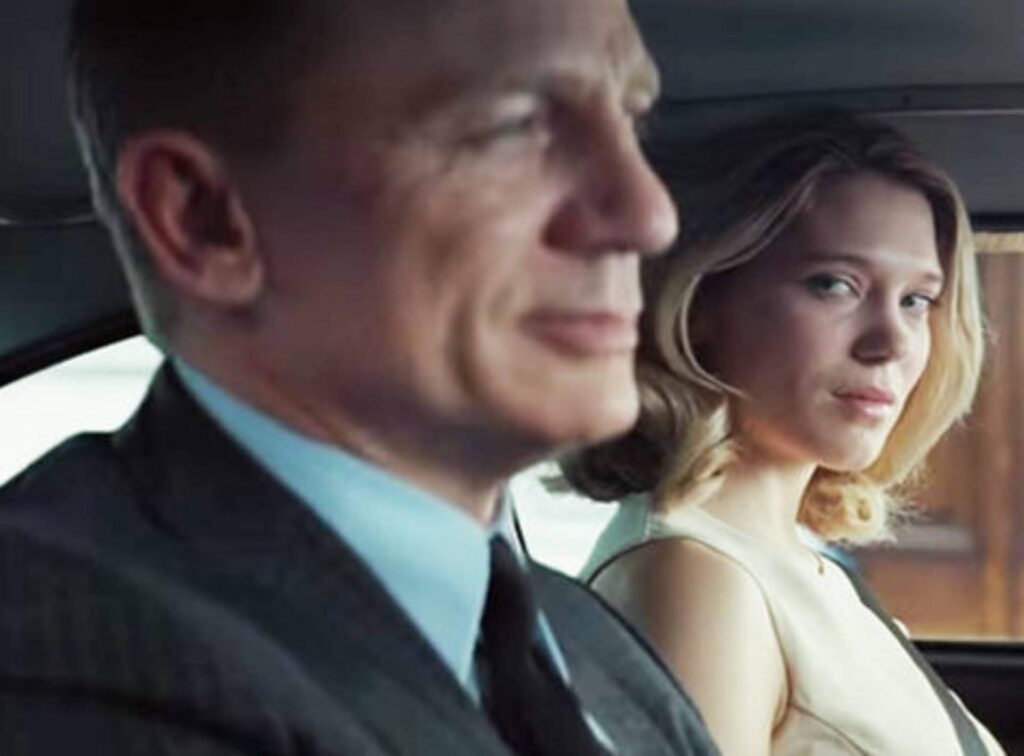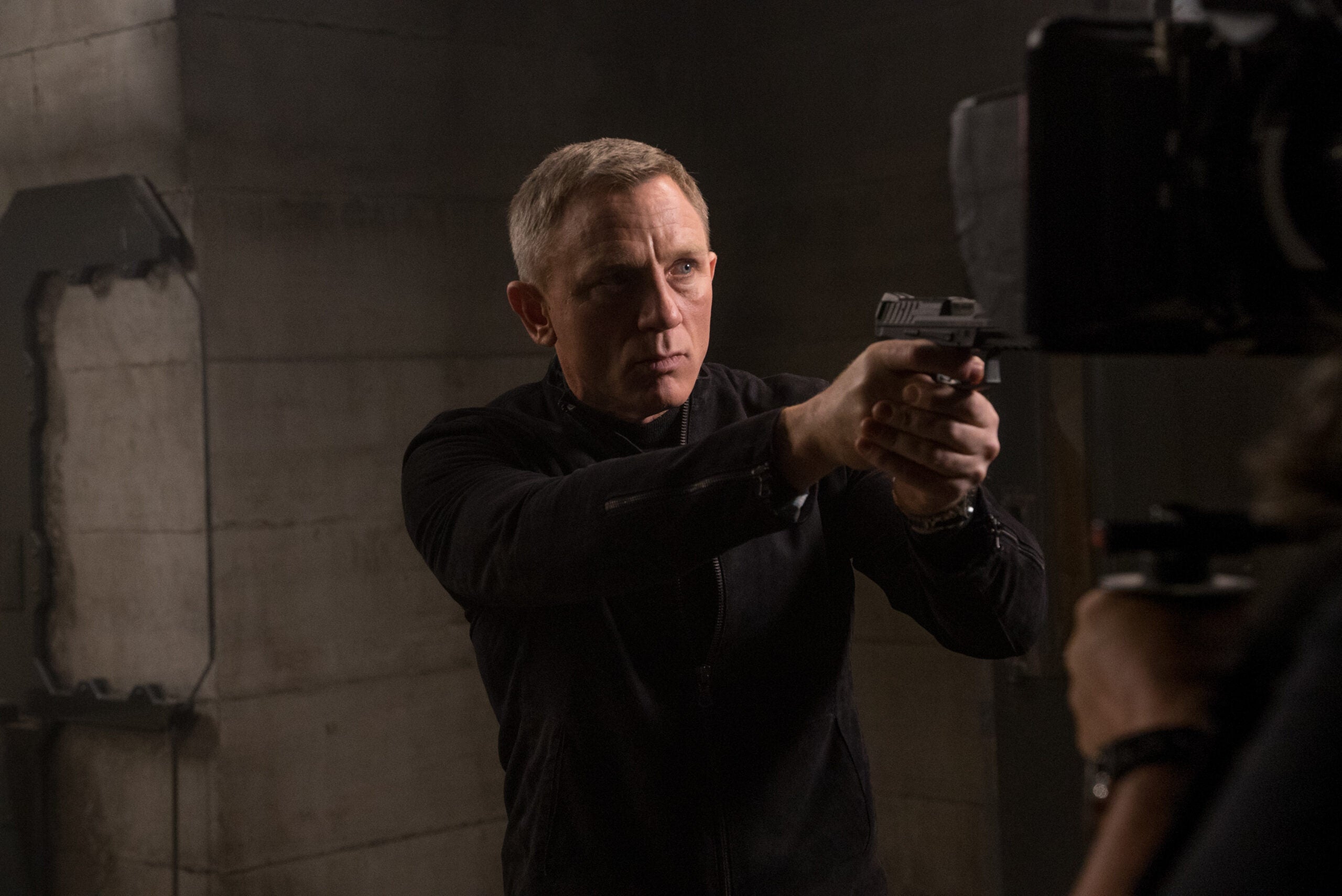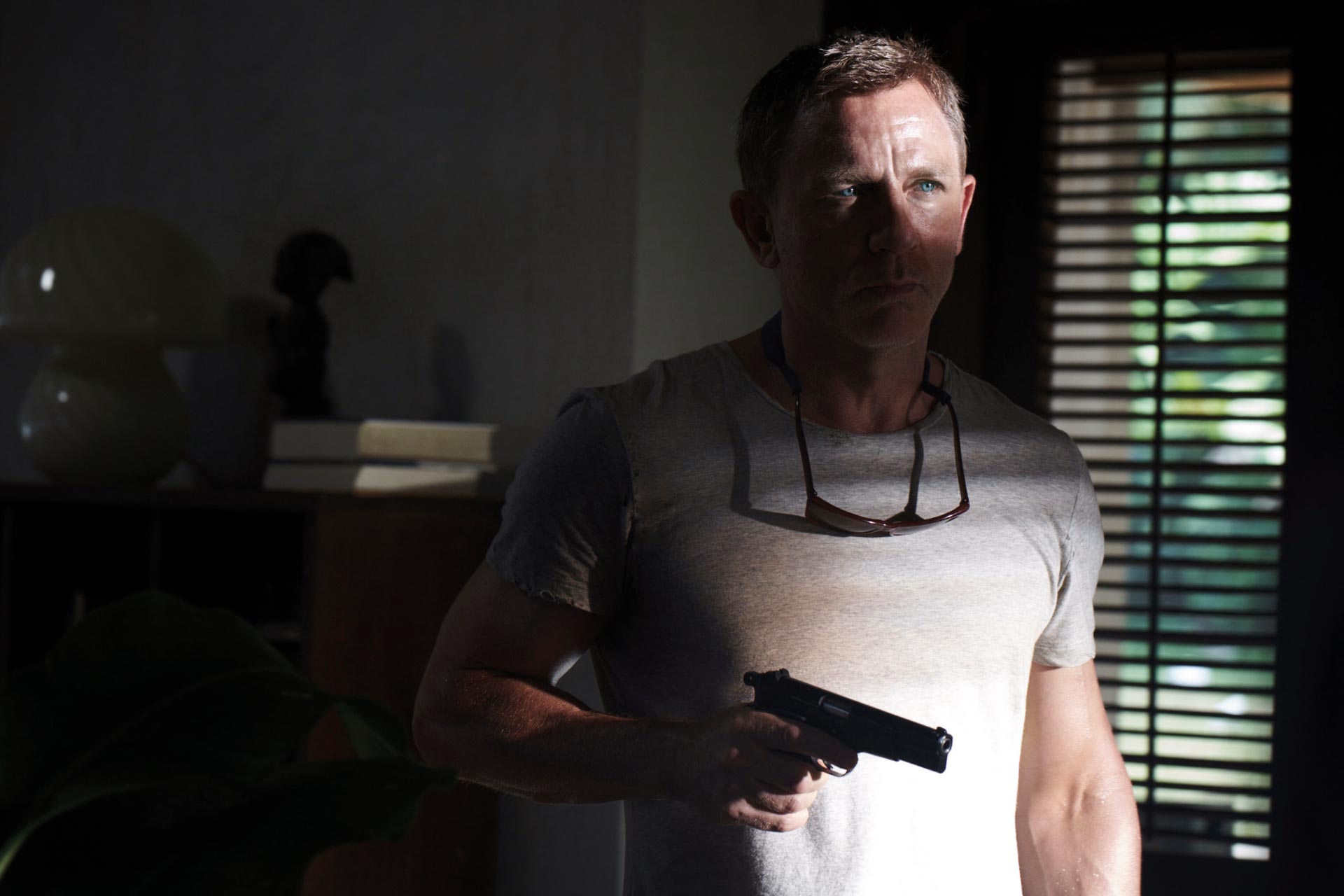Spectre At Ten
Celebrating Daniel Craig’s fourth 007 adventure
The follow up to Skyfall (2012) sees Bond (Daniel Craig) acting on a message left by the late M (Dame Judi Dench), and uncovering the murky world of SPECTRE, a sinister underworld organisation run by Franz Oberhauser/Ernst Stavro Blofeld (Christoph Waltz), who describes himself as “the author” of Bond’s pain. On a globetrotting adventure that begins in Mexico, and travels across Rome, Austria, Morocco and London, Bond confronts the ghosts of his past, before embarking on a brighter future with new love Madeleine Swann (Léa Seydoux). To mark its 10th anniversary, this is the behind-the-scenes story of Spectre in ten episodes…
- 1. A Returning Director
Skyfall earned $1.1 billion at the global box office, becoming the highest grossing film of all time in the UK. Despite such success, director Sam Mendes was reluctant to return so soon to the director’s chair. But, with a delay to the start date, the tenacity of producers Michael G. Wilson and Barbara Broccoli managed to woo the filmmaker back.
“Skyfall was a very dark picture because of the locations — a lot of it was shot at night, underground — and because of what Bond was going through as a character. I wanted a more proactive Bond, with more locations and a greater variety of tone. Once those possibilities had been unlocked for me, I really wanted to do it.”
Mendes signing on the dotted line also proved popular with his star.
“I’m working with a friend,” Craig remarked, “that makes me very happy.”
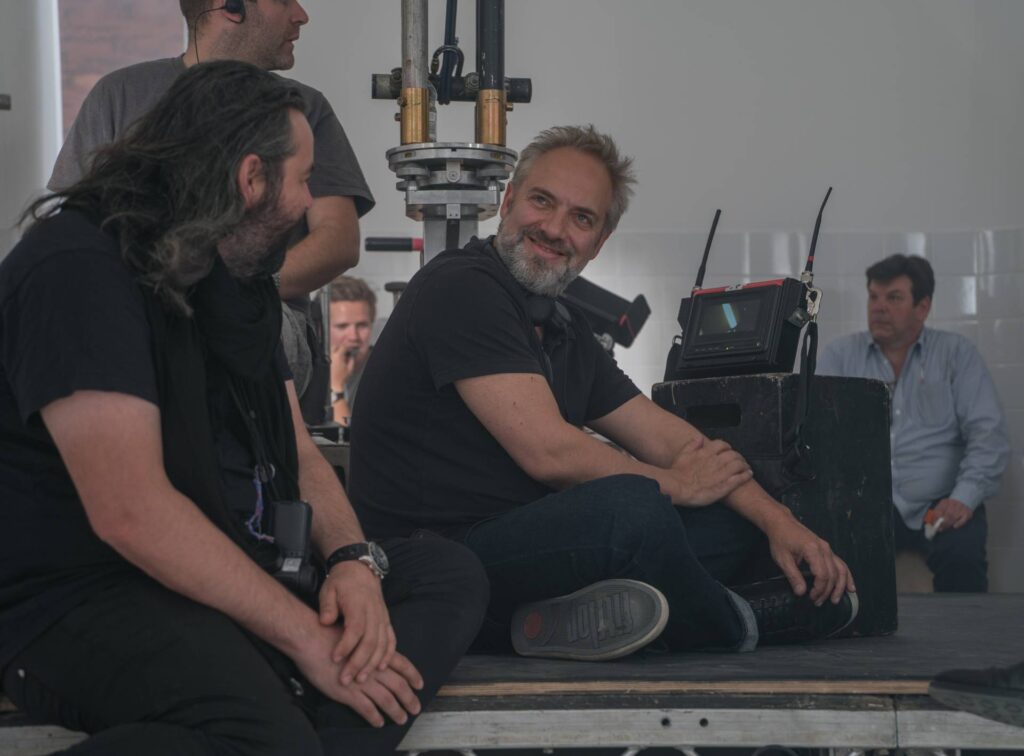
- 2. First Thoughts
The initial concepts for the Spectre story were very different to the finished film. Screenwriter John Logan’s early ideas had Blofeld, an African National, living in a Japanese castle in the mountains with a poison garden (an idea that resurfaced in No Time To Die). The plot revolved around Blofeld seeking to control the chemical elements integral to the creation of computers and cell phones. “It wasn’t a strong enough threat, so we had to rethink it,” said co-producer Michael G. Wilson. Logan’s next ideas included foiling the plot of a toxic-waste dumping in the Mediterranean with SPECTRE’s leader Charlotte King — Blofeld’s daughter — in her radioactive volcano. Ultimately, the story pivoted around Bond’s personal connection to his biggest nemesis.
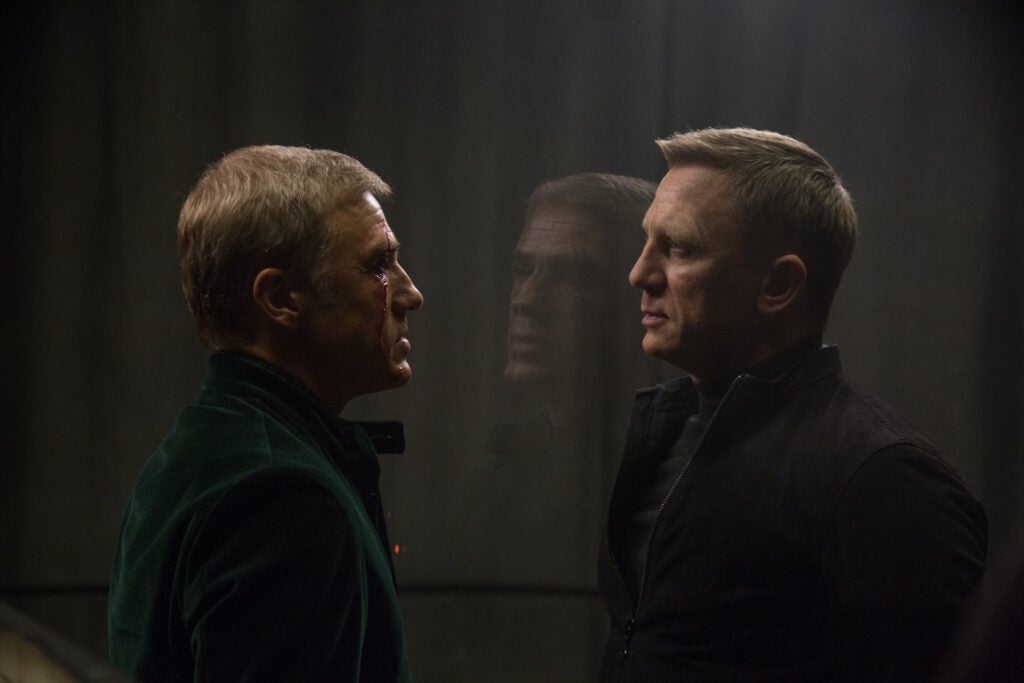
- 3. A Dark Icon Returns
Mendes always wanted the Skyfall follow-up to be about the series’ arch enemy Ernst Stavro Blofeld and SPECTRE, but the character was tied up in legal wranglings. When the rights complications were cleared up, the story, inspired by Ian Fleming’s Octopussy short story, explored the personal history and connection between Bond and Blofeld. The backstory saw an orphaned Bond sent to live in Austria with a man named Oberhauser and his son Franz. Bond becomes “the golden boy” of the family, much to Franz’s anger. This jealousy sees Franz kill his father and swear revenge on his adopted brother by faking his own death and transforming into Ernst Stavro Blofeld.
“I thought that was a really cool idea that both unlocked a section of Bond’s past,” Mendes told author Mark Salisbury for the book Being Bond, “but also linked him to all the various sources of his pain, as Blofeld puts it.” From here, Spectre moved towards a story that saw Blofeld puppeteering the misfortunes Bond faced in his previous three films.
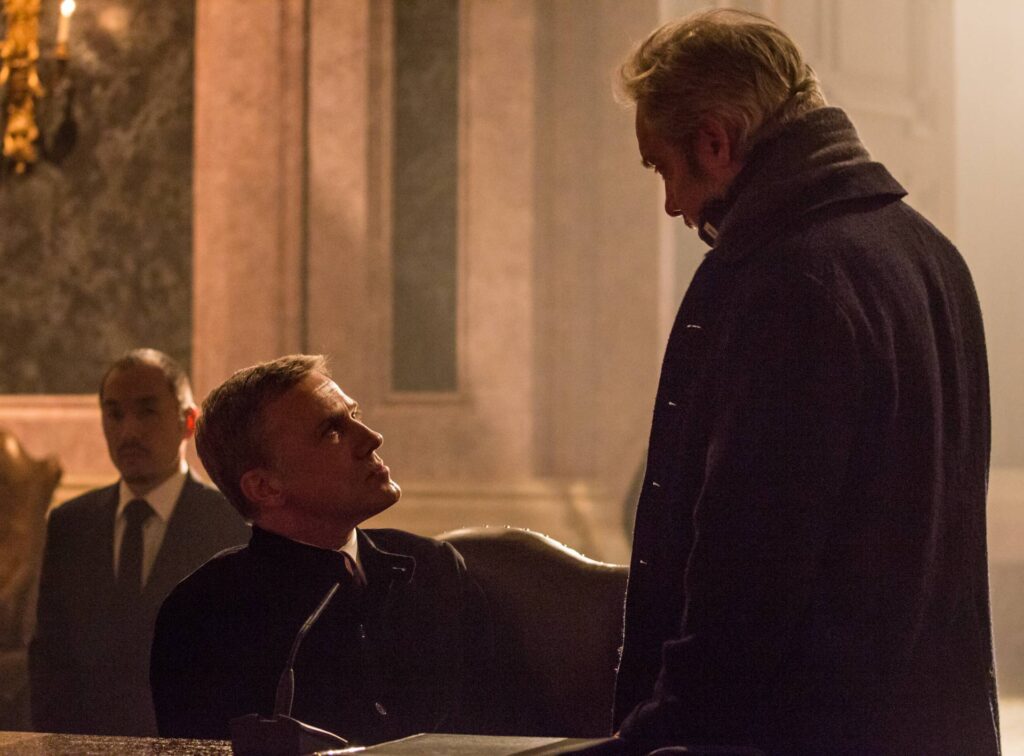
- 4. The Day Of The Dead
Spectre opens in Mexico City, with Bond on assignment in the middle of the Day of the Dead parade. To seduce the audience into the world, Mendes conceived the action in one long seemingly continuous take. In actuality, it was a number of separate shots digitally spliced together, combining moments on location in Mexico and scenes staged at Pinewood Studios. The parade itself was mounted across several days, featuring 1520 extras, 77 dancers and musicians, and 10 huge puppets.
“People were in the streets until five in the afternoon doing the same thing over and over again,” remembered Mendes. “I thought they would mutiny, but if anything, they got more enthusiastic as the day went on. We had live musicians and there was a sense of party about it, which is what you want but is so rarely achieved on a movie set.”
Ending with a fight on a helicopter high above Zócalo square, the sequence not only delivered a huge spectacle but also set out the themes the film would explore.
“One of the things that is said about the Day of the Dead celebration is that ‘Los muertos vivos están’ – ‘The dead are alive.’ That has a direct bearing on our story.”
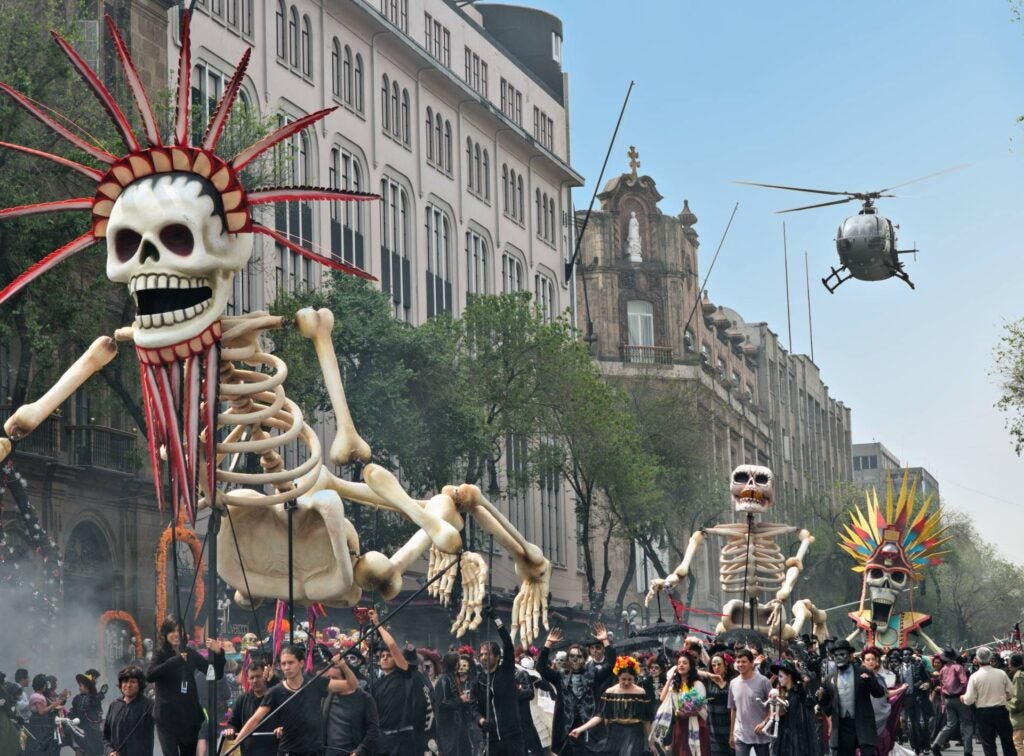
- 5. When In Rome
Bond’s journey to Rome on the trail of the Pale King was the first time a 007 film was shot in the Eternal City. The spectacular capital became the backdrop for a car chase between Bond and SPECTRE assassin Mr. Hinx (Dave Bautista). In another series first, the production collaborated with Aston Martin on a new car created specifically for the film: the DB10.
“I was looking for a way to get a new car into Bond 24,” says Sam Mendes. “I wanted what comes with the cars; mischief, fun and speed.” The subsequent game of cat and mouse — Bond in the DB10, Hinx driving a Jaguar C-X75 — through the empty night-time streets of Rome and along the Tiber was conceived as a duel on wheels. The city’s historic buildings were covered with protective cladding to stave any damage from vehicles travelling at speeds of 120 mph. The set-piece utilised eight Aston Martins and seven Jaguars, the cars often fitted with remote driving pods allowing stunt drivers to steer while Craig and Bautista appeared to be driving. Still, within the thrills and spills Mendes was keen to inject some lightness.
“We added a bit of a twist. Bond steals the car without knowing what it does and then has to work out what it does during the chase.”
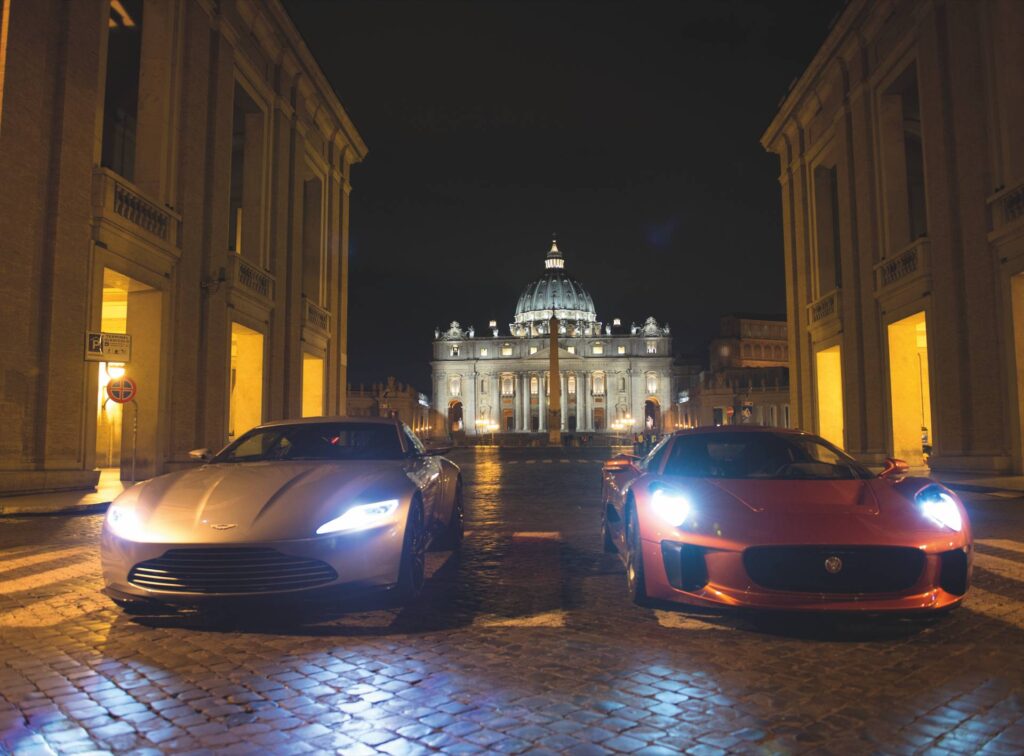
6. A Match For 007
At one point in the development of Spectre, John Logan’s log-line for his screenplay was ‘Bond falls in love.” Initially called Kaja, Dr. Madeleine Swann became the daughter of Mr. White and was envisaged as an intelligent, independent woman who reveals to Bond the identity of the sinister organisation he has been pursuing as SPECTRE. Searching for an actor capable of going toe to toe with Daniel Craig’s Bond, Mendes met with Léa Seydoux, the breakout star of Cannes-winner Blue is The Warmest Colour, in London.
“I was early for the appointment and I was a little bit anxious,” recalled Seydoux. “I started to have a panic attack and lost my text. I felt very stressed about it.”
She needn’t have worried. She won the role and became an even more important figure in Bond’s life during No Time To Die.
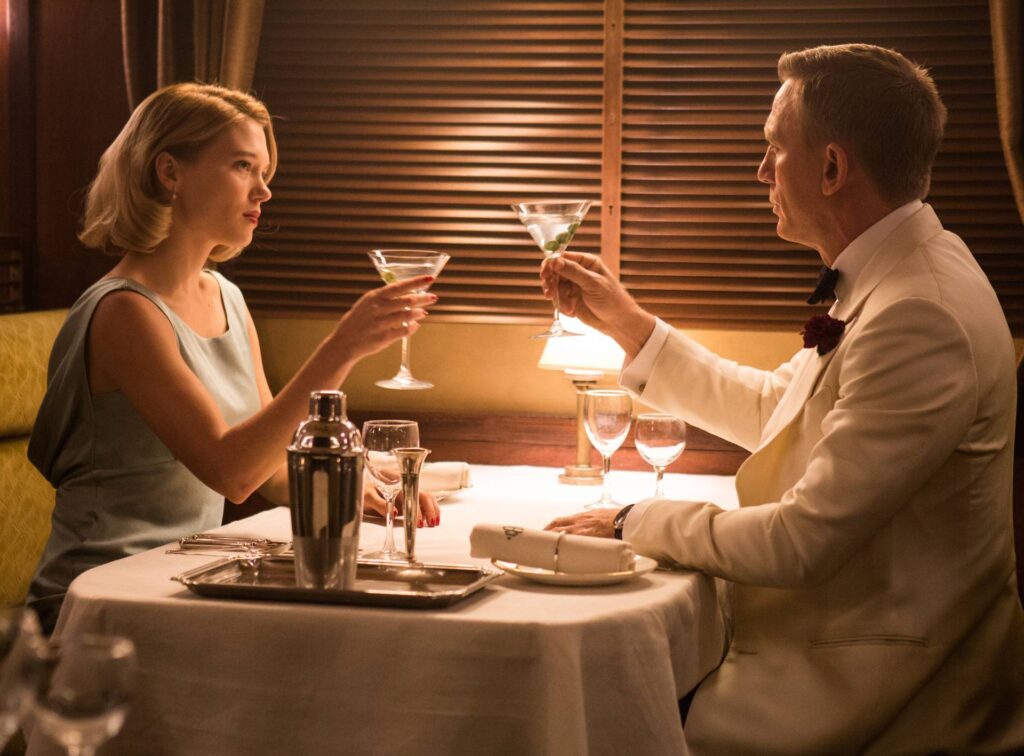
- 7. Mountain Madness
Bond first encounters Madeleine at the Hoffler Klink, an incredible mountain top institute in the Austrian Alps. The production found the perfect location in the newly built ICE-Q restaurant and cable car atop the 3000 metre Gaislachkogl mountain in Sölden, Austria. While the interiors were recreated back at Pinewood against a 360-degree photographic backdrop, Mendes kept the exteriors on location. After Madeleine is bundled away by Hinx and his operatives in black Range Rovers, Bond gives chase in a small plane that becomes a toboggan after the wings are ripped off in a mountainside forest, the shell of the aircraft driven by the stunt team in hidden skidoos.
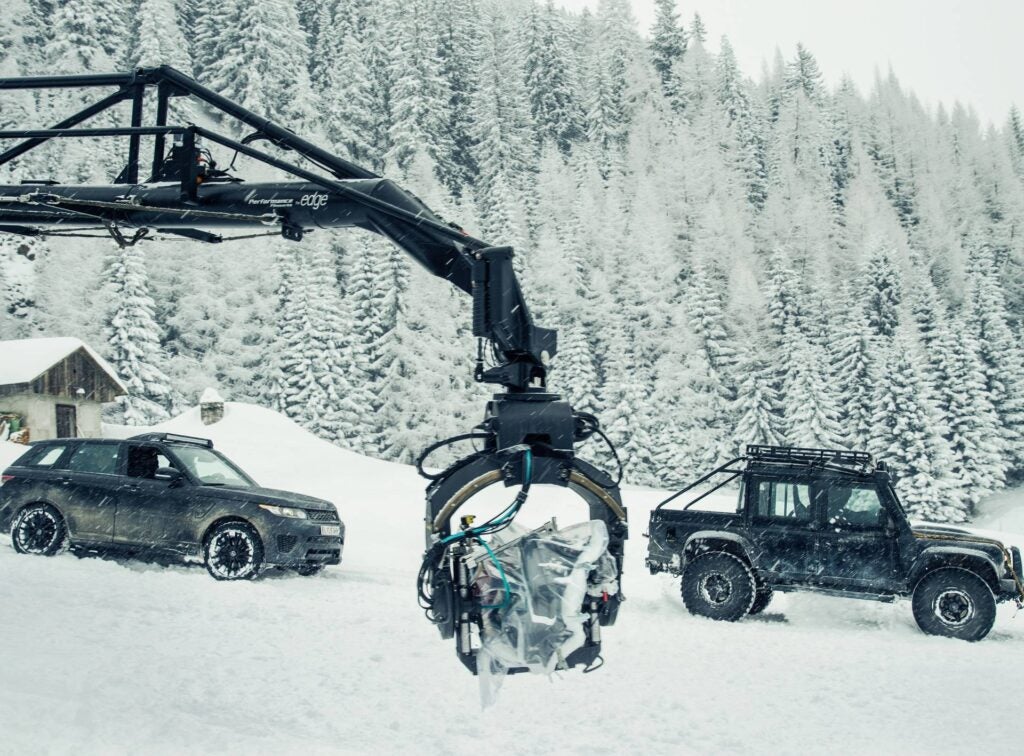
- 8. Train and Pain
After arriving in Tangier, Bond and Madeleine take a train towards Blofeld’s lair inside a meteor crater in the middle of the desert. En route, they are attacked by Hinx, creating in-carriage carnage reminiscent of the train fight in From Russia With Love.
“Sam saw Hinx as a 21st Century Oddjob,” said Stunt-Co-Ordinator Gary Powell, “so the train fight was to be presented as a David and Goliath situation. Normally Bond gives a couple of punches to somebody and he’s out of it. But this time he knows he is in a fight. Dave Bautista is a big guy. Generally when you see somebody big they are quite cumbersome and slow, but he moves really fast. I wanted to use that.”
Mapped out in a rough wooden train carriage by stunt co-ordinator Olivier Schneider, the battle begins in the dining car and crashes through the carriages. “I remember we called that fight ‘the tornado fight’ because it was basically like a tornado, these two guys moving forward as everything behind them was completely destroyed,” Schneider told 007.com.
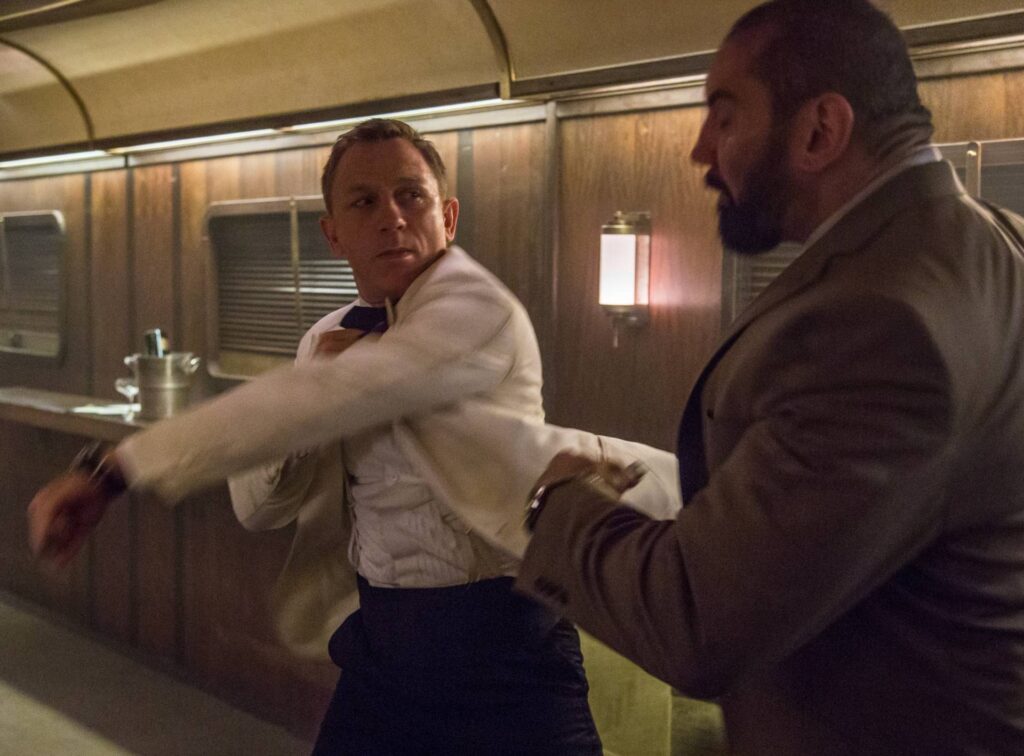
- 9. The River Wild
After blowing up Blofeld’s base (which earned a Guinness World Record
for the biggest on-screen explosion), Bond and Madeleine return to London but are separately abducted by SPECTRE heavies. The action takes place in the abandoned MI6 building (a throwback to Skyfall) and develops into a full-on boat versus helicopter chase along the Thames. To secure a six week night shoot was a logistical challenge, involving gaining the support of the Port of London Authority and sending 11,000 letters to residents and businesses, warning them of the disruption. Lighting the scene at night became a monumental endeavour, illuminating the river from Vauxhall Bridge to Westminster, utilising some 80 lighting positions.
But the moment where Blofeld’s helicopter crashed onto Westminster Bridge was recreated in the safe confines of the 007 stage. For all the digital technology available, photo panels gave the set an illusion of depth. “I love that old fashioned in-camera trickery,” Daniel Craig told Mark Salisbury. “It’s the trickery of making believe.”
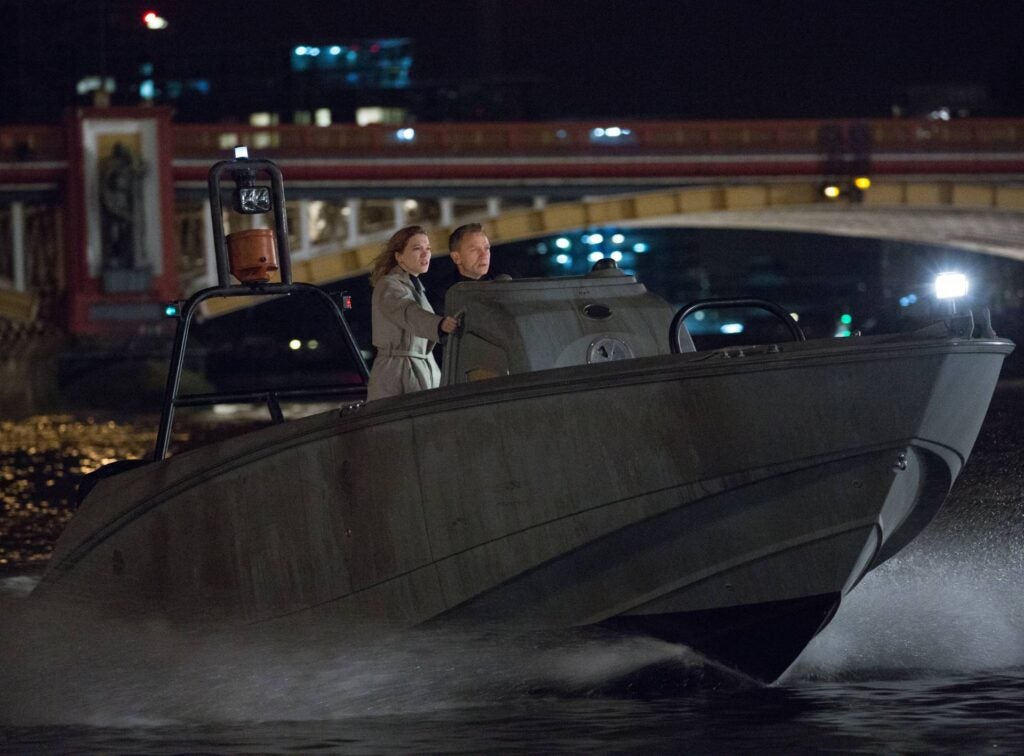
- 10. A Huge Impact
Spectre had its world premiere at the Royal Albert Hall on October 26, 2015 before opening in the US on November 6. The film went on to earn a box office gross of $880 million worldwide. The film’s theme song, Writing’s On The Wall, sung by Sam Smith and written by Smith and Jimmy Napes, won the Best Original Song at the 2016 Academy Awards and the 73rd Golden Globe Academy Awards the same year. It also became the first Bond song to reach number one in the US Singles Chart.
“In Casino Royale, Bond fell in love, got double-crossed, and decided that he could never have an emotional life again,” said co-producer Barbara Broccoli about the film’s place in Bond’s emotional arc. “In Spectre, he meets Madeleine Swann who asks him, ‘Is this really what you want? Living in the shadows. Hunting. Being hunted. Always looking behind you. Always alone.’ For the first time since Vesper Lynd, he sees the possibility of another life.”
The complex narrative of Spectre ends with Bond and Madeleine driving off in the Aston Martin on a new adventure. It was a journey that would be resolved five years later in No Time To Die.
